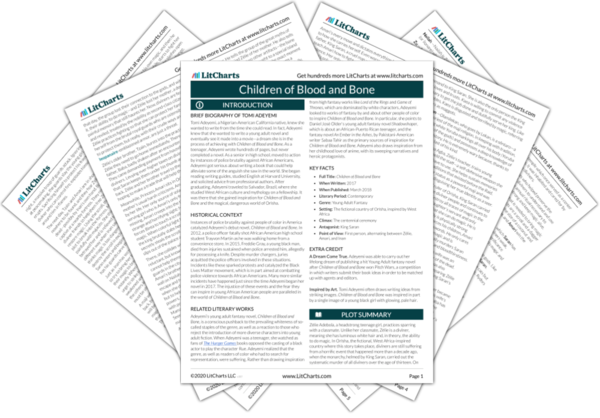Previous
Chapter Seventeen
|
Previous
Chapter Seventeen
|
Children of Blood and Bone: Chapter Eighteen Summary & Analysis |
Next
Chapter Nineteen
|


Upgrade to unlock the analysis and theme tracking for all of Children of Blood and BoneChildren of Blood and Bone!
Get LitCharts A+